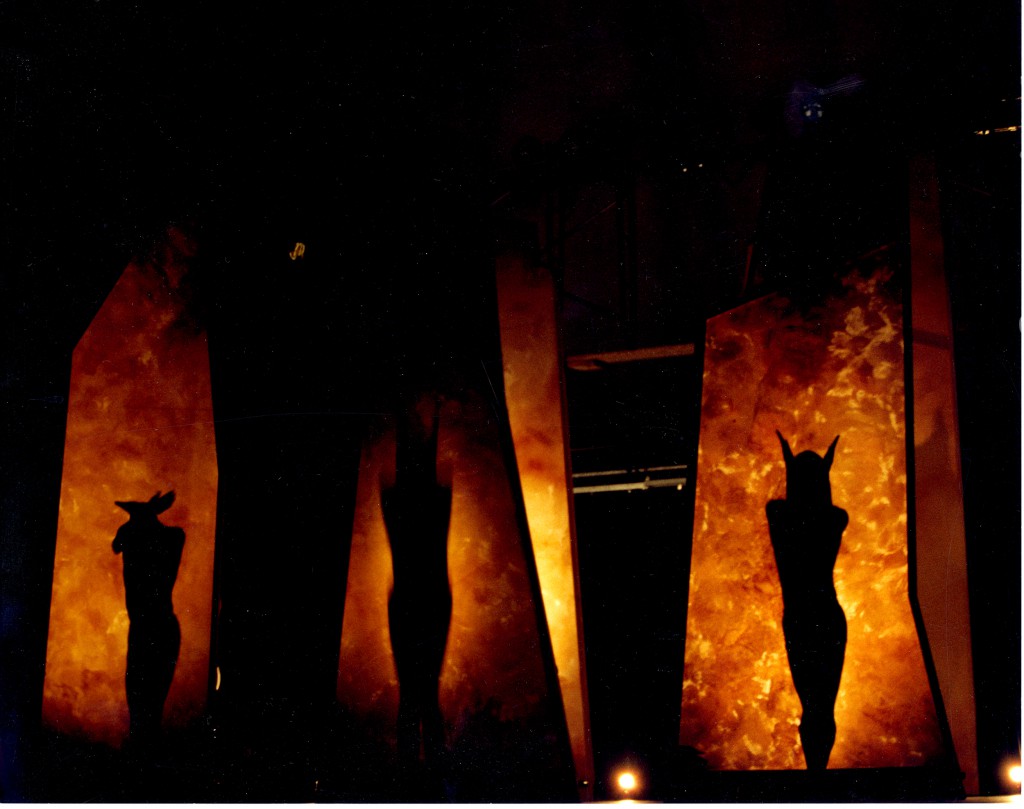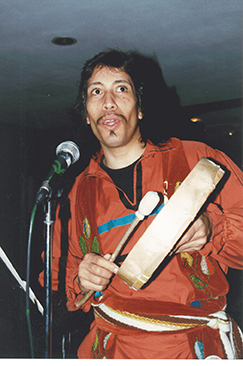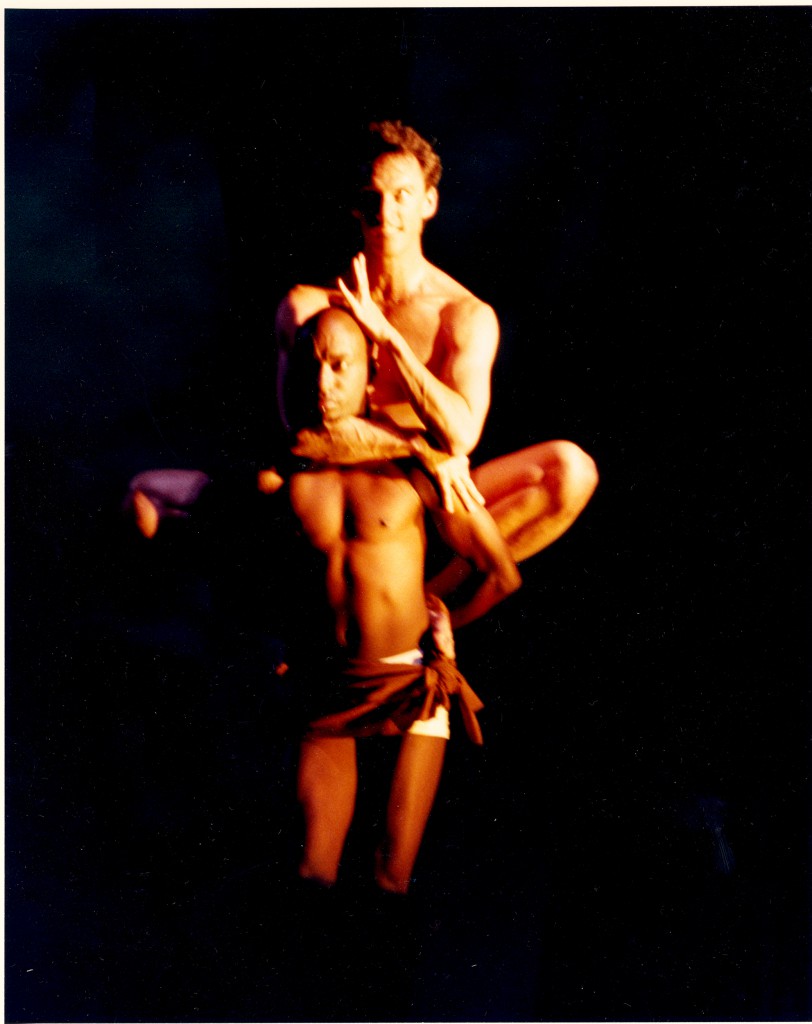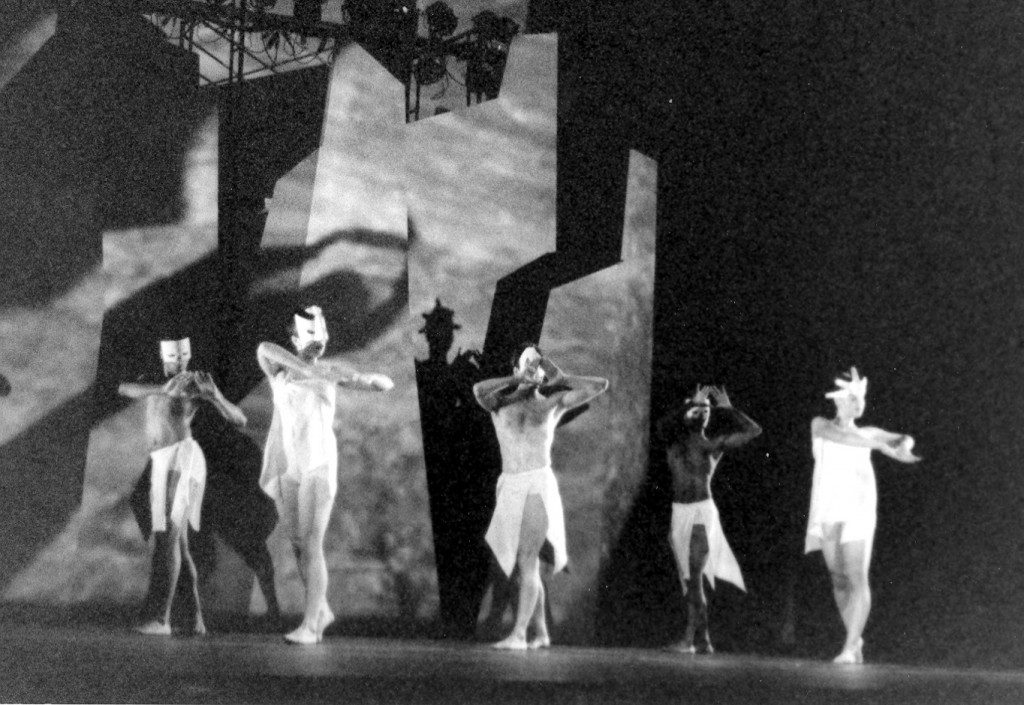Utah * Spirit Place * Spirit Planet * Tukuhnikivatz
1996 – an evening length multimedia installation and performance based on ancient and contemporary earth consciousness commissioned by Lincoln Center for Lincoln Center Out of Doors, GREAT DANCE in the Band Shell Series, Damrosch Park, New York City, NY. Research took place over a period of 6/7 years with Maida Withers and Verabel Call Cluff engaged in on-site research in Utah and the Four Corners Area of the Southwestern United States (Utah, Colorado, New Mexico, Arizona). Time was spent with the Hopi, Navajo, and other indigenous peoples living in the region to understand the their “earth” and “origin” philosophies. Great respect is given to the sacred pictographs and petroglyphs (rock art) in the region. Video was obtained by hiking into various locations – mostly in obscure places in Utah. These sacred images have often been destroyed and disrespected so we were careful and respectful in our search. A six-week residency of dancers and filmmakers at four Earth sites in Utah provided the primary footage of dancers on landsites. Many of the ideas for the work were spawned by Maida’s family history, early pioneers who settled in southern area of what later became Utah. The Rust family respected and had interest in the land, including the Green and Colorado Rivers and, especially, the Grand Canyon. Maida’s father and grandfather built and operated the Kaibab Lodge (VT Ranch)18 miles from the North Rim of the Grand Canyon. The Lodge continues today.
Pioneer ancestors of Withers settled in southern Utah in the 1860s. Spirit Place * Spirit Planet refers both to her ancestors love of the land and Native American peoples who resided in the region, past and present. Mount Tukuhnikivatz is a triangle-shaped sacred sacred mountain. Maida found the mountain originally on a map in a restaurant known as the place at “end of time” where people will gather, the place where the “Sun last sets” in the La Sal Mountains in Utah. Sunny and Hardy Redd made our residency possible by providing their winter home and 15 passenger van for our use for six weeks. We honor and recognize the importance of these lands to Anasazi (ancestral Puebloan), Navajo Nation, Zuni, Hopi, and Ute and the Gteat Gallery, Barrier Canyon Style of the Desert Archaic culture.
The immensity of the project made additional performances of the entire work almost impossible. We were honored to have 2500 people attend the Lincoln Center Out of Doors performance. The work was conceived, choreographed and directed by Maida Withers. Brent Michael Davids, Mohican Nation, composed and directed the music with his Blue Butterfly Group musicians and Will Goins, singer, Cherokee; Bruce Hucko, Earth photographer, Verabel Call Cluff and James Byrne, filmmakers responsible for the landsite projections throughout the production, Turker Ozdogon and GW MFA ceramic students designed/created masks; Tom Fiocchi fabricated “moving buttes” and stilts for “night figures,” many others.
History:
“In 1988, I returned to the land of my birth in Utah with a group of artists for a five-week experiment of living and dancing on selected land sites to create a dance video. Each day we understood better how to join with the forces of nature. We experienced the extraordinary physical and spiritual powers of this place and its inhabitants, and we glimpsed our most inward selves. Slowly I began to make linkages between my concern with new art, my own culture, and these ancient sites and people. The connections involve the relationship of nature and culture and, more importantly, raise questions relating to the very meaning and function of art.” Maida Withers, 1990.
Utah * Spirit Place * Spirit Planet * Tuhnikivatz is a co-collaborative undertaking that fearlessly moved forward in a bold trajectory, knowing there will be only one performance for one time and one space.
Object Label
#1
Utah * Spirit Place * Spirit Planet * Tukuhnikivatz (1996)
Concept, Choreography: Maida Withers
Music Composition: Brent Michael Davids, Mohican Nation
Musicians: Blue Butterfly Group – Brent Michael Davids (Mohican Nation), flutes and percussion; Will Goins Moreau (Cherokee Nation), vocals; Dasha Hlavenka, violin and percussion; Joe Myers, acoustic and electric guitars, Will Goins Moreau (Cherokee Nation) vocals and drum
Dancers on Stage: Giselle Ruzany, Helanius Wilkins, Joseph Mills, Maida Withers, Monstah Black (Reginald Crump), Sarah Slifer, Vincent Cacalano
Dancers on Video Installation: Cristy Lamb, Emily Ojala, Maida Withers, Tim Harling, Will Goins Moreau (Cherokee Nation)
Spirit Figure Dancers: Alesia Young, Allen McDermott, Catherine Cacho, Elana Lanczi, Heather Pultz, Iwonka Swenson, Lily Ross, Michelle Higgins, Nancy Menapace, Teshina Wilson
Earth Photographer: Bruce Hucko
Photograph Installation: Bruce Hucko, Jennifer Kinloch
Costume Design: Kelli. K. Owens
Mask Design: Turker Ozdogan
Light Design: Spencer Brown
Visual Installation: Jennifer Kinloch
Principal partner/road warrior: Verabel Call Cluff,
Guide: Joe Pachak
Documentary Video: Adam Peiperl
Sponsors: Sunny and Hardy Redd, LaSal Ranch; GW Television; KUED TV; At the Canyon’s Edge; Canyonlands Field Institute; White Mesa Institute; Forest Service; US Department of Interior
Sources:
https://maidadance.com/works/utah-spirit-place-spirit-planet-tukuhnikivatz/
https://vimeo.com/7983497
We honor and recognize the importance of these lands to Anasazi (ancestral Puebloan), Navajo Nation, Zuni, Hopi, and Ute. Of particular influence is the Great Gallery rock art panel and others in the vicinity generally called the “Barrier Canyon Style” and are attributed to the Desert Archaic culture who lived in Utah from 8000 BC through 500 AD.
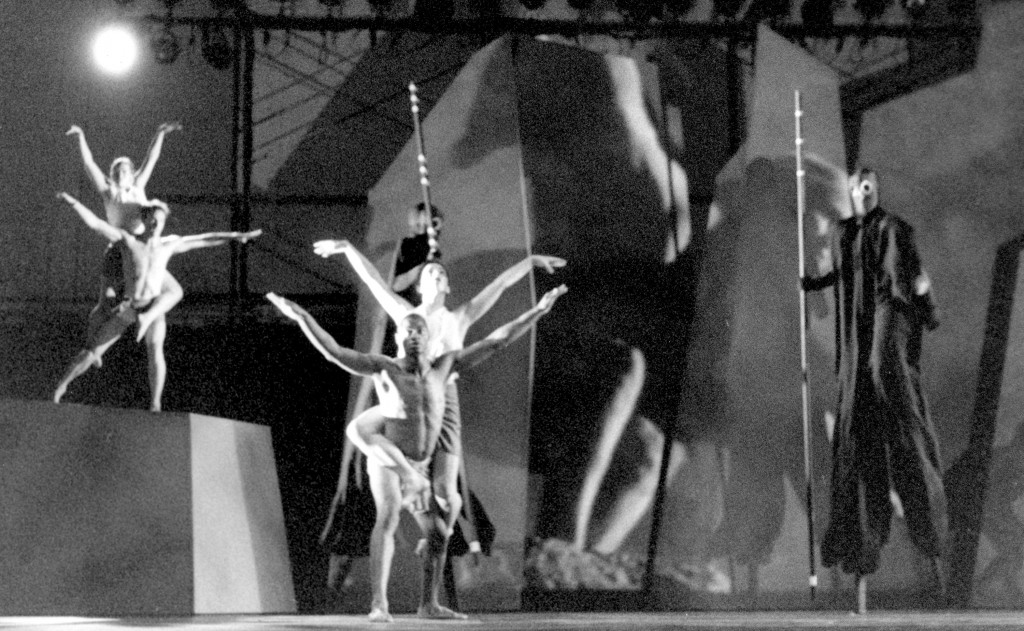
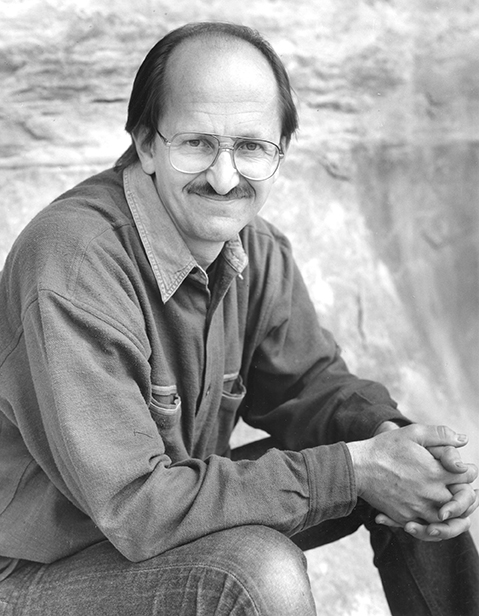
Bruce Huck, Earth Photographer
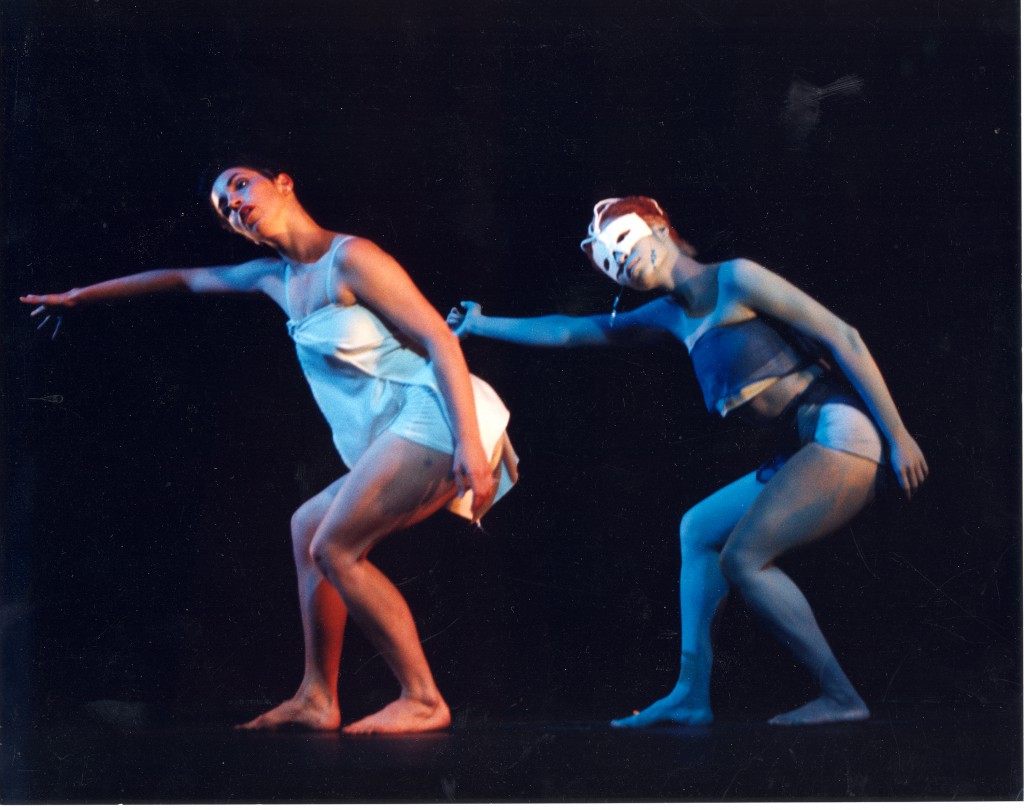
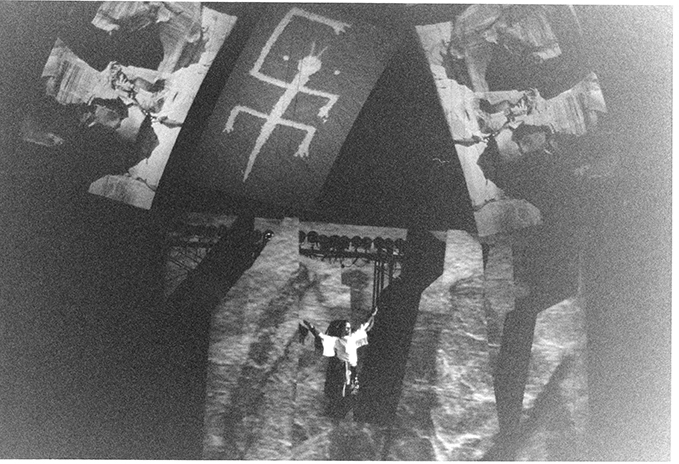
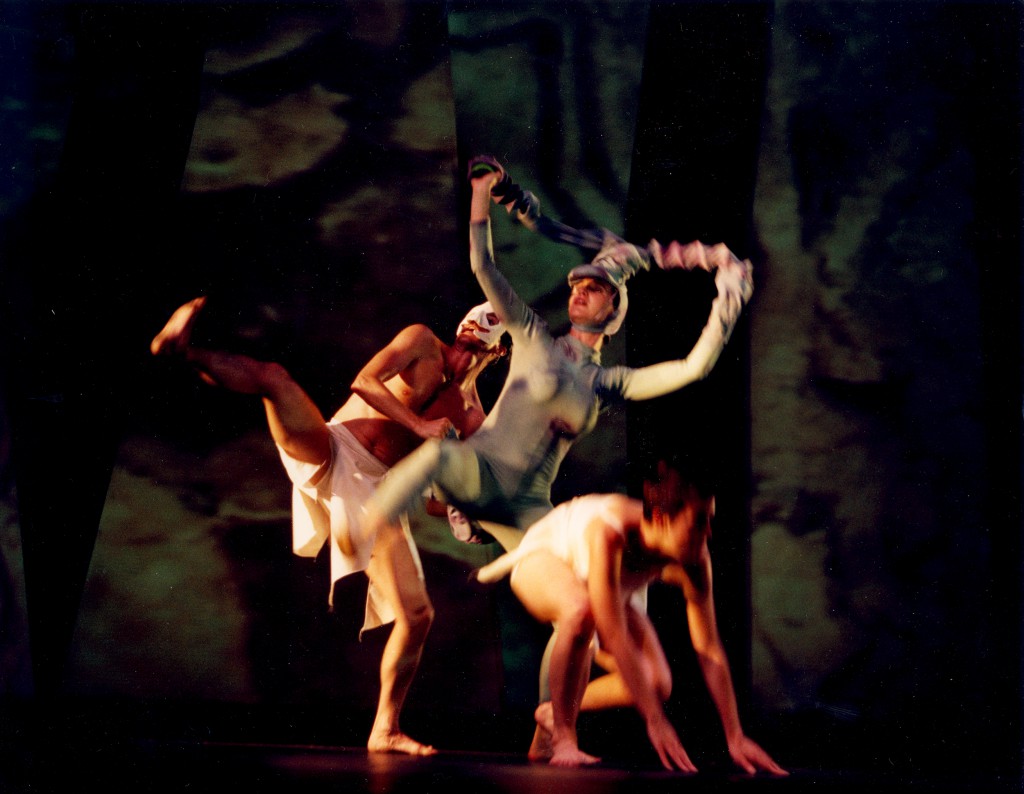
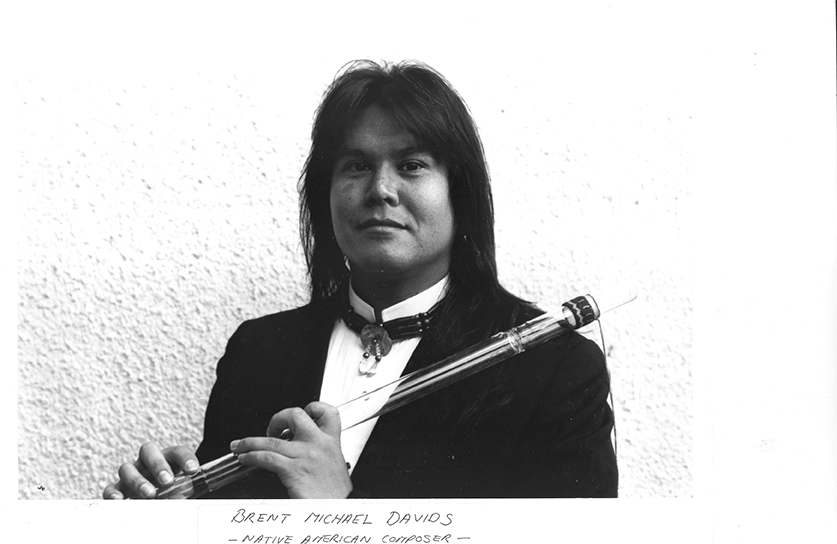 Brent Michael Davids, Musician and Composer
Brent Michael Davids, Musician and Composer
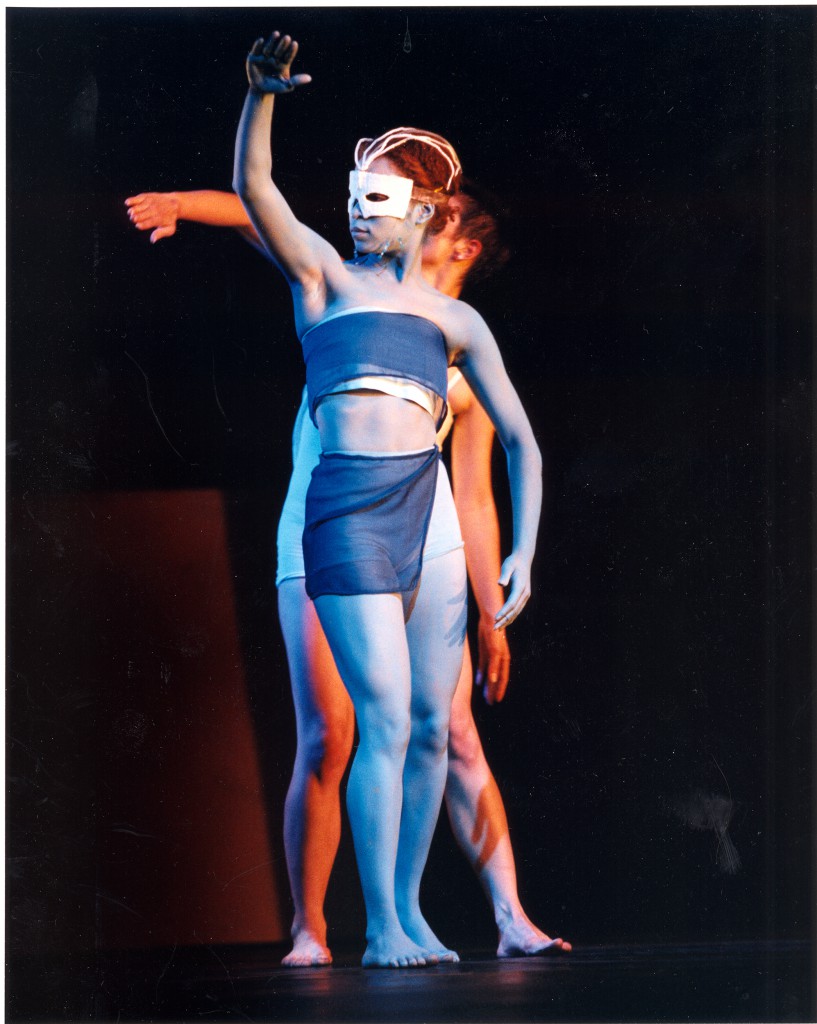

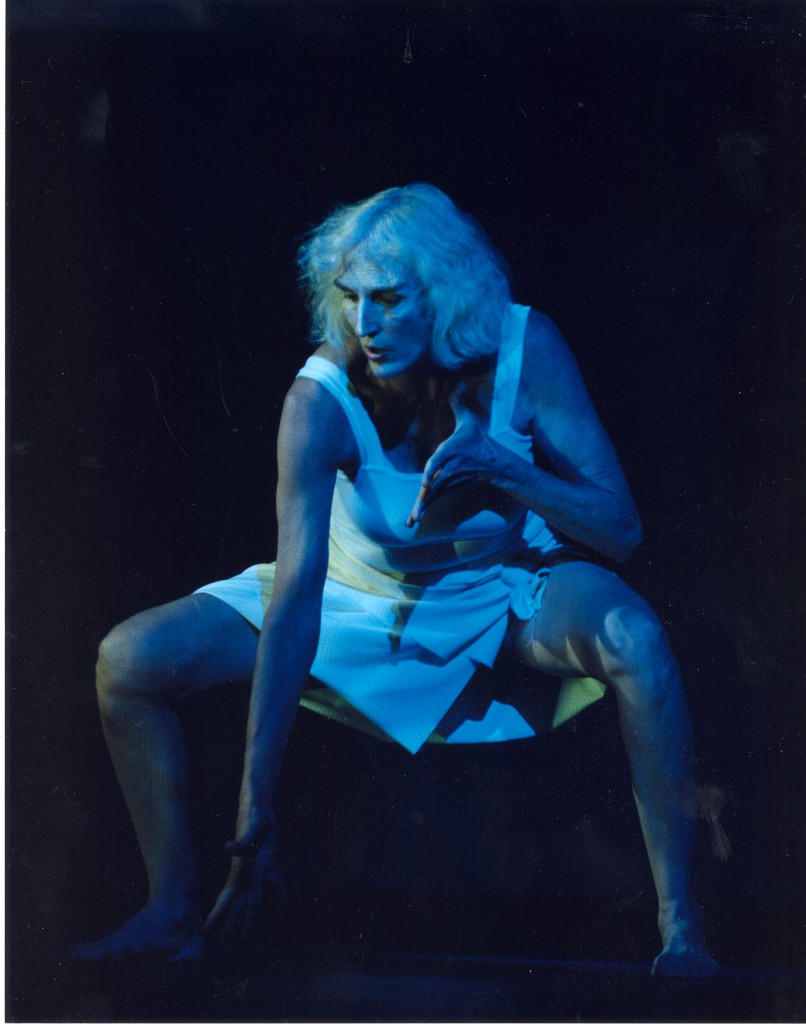
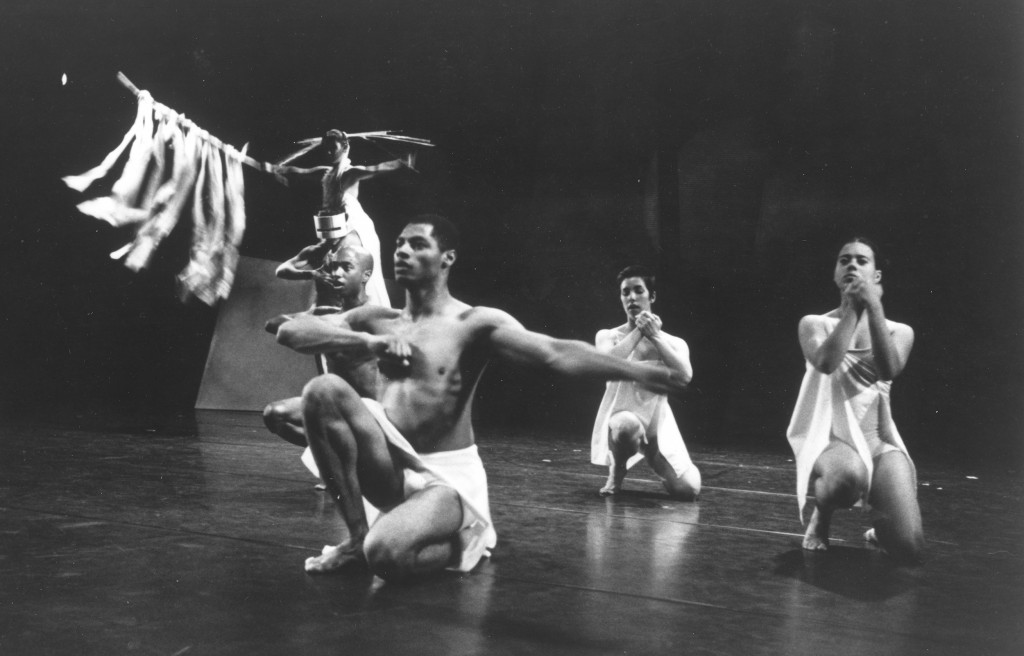
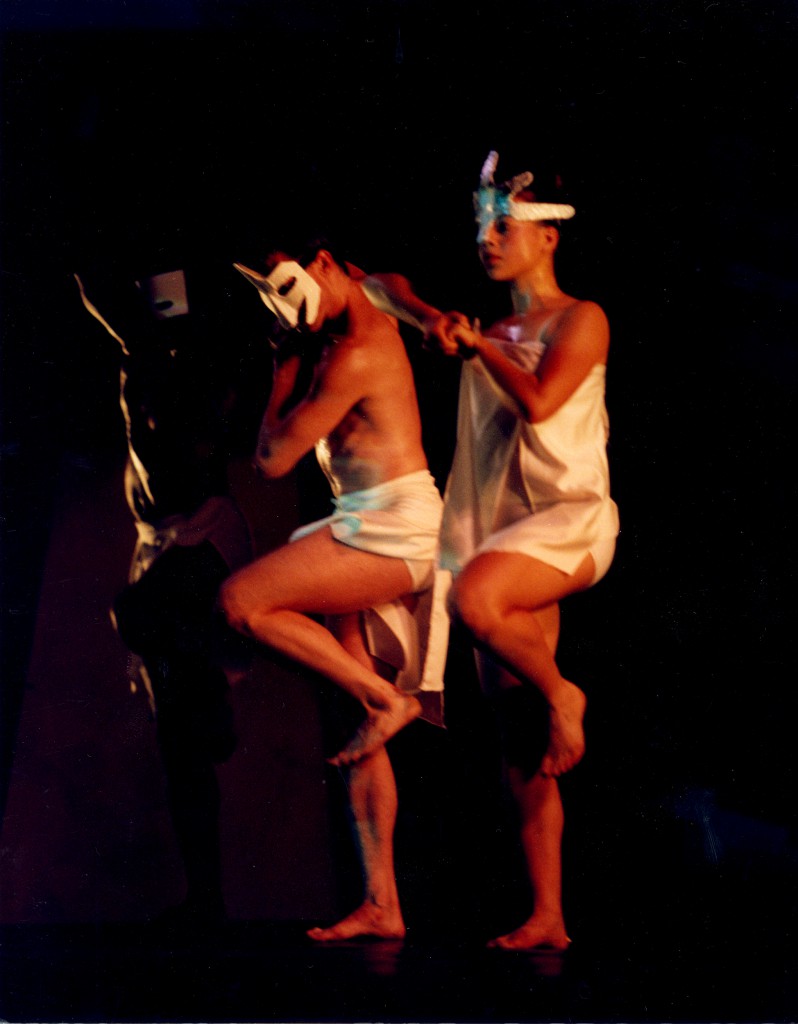
*UTAH * SPIRIT PLACE * SPIRIT PLANET * TUKUHNIKIVATZ (Ute)
Tukuhnikivatz, a futuristic evening-length multimedia dance performance, maps a trajectory from the past to the future in a way that universally links us to the mystery and power of the wilderness lands in the Four Corners Area of the United States – and the Native American spirit and ancestral voice that reside there ‑ tracking and redefining this spirit for modern times to renew and celebrate our consciousness and connection to the earth and planet.
Concept and Choreography: Maida Rust Withers
Music Composition: Brent Michael Davids
Dancers on stage: Katia Chupashko, Wendell Cooper, Reginald Ellis Crump, Sarah Slifer, Jennifer Clark Stone, Helanius J. Wilkins
Dancers on film: Maida Withers, Tim Harling, Cristy Lamb, Emily Ojala, and Will Goins
Musicians: Brent Michael Davids (Mohican Nation), flutes and percussion; Will Goins (Cherokee Nation), vocals; Dasha Hlavenka, violin and percussion; Joe Myers, acoustic and electric guitars
Visual Artists: Bruce Hucko, photographs; Verabel Cluff, video; Adam Peiperl, Kinetic light sculptures; James Byrne, video; Stefani Altomare-Sese, video editing; Jennifer Kinloch, design; GWTV assisted with the editing of the projected video.
Program
Part I: “Earth/Spirit” Dancers in the guise of future and past spirit figures based on ancient rock art (light, darkness, water, messenger eagle, angel messenger, spider woman, noble warrior, trickster, wisdom, and shaman) emerge from continually changing projected environments. These figures reflect centuries-old rock art carved or painted on the canyon walls in Utah.
Part II: “Passage” Dancers, man and woman, move as earth and landscape, rock and moving earth/dunes ‑ sounding the environment, signaling, and aerial dancing in earth’s deep belly ‑ marking the sun by creating shadows in a human chain as living petroglyph ‑ migrating, partnering and working together creating a metaphor for the survival of all life.
Part III: “Transformation” (three segments) Dancers, moving with vibrant energy, combine the ancient with the future, and eventually come to a profound unison and simplicity, a peaceful transforming and knowing as they adopt the masks of the spirit figures.
*Utah*TUK was first presented by The George Washington University Department of Theatre and Dance in April 1996 and premiered at Lincoln Center GREAT DANCE in the BAND SHELL in August, 2006. Utah*TUK is a Maida Withers Dance Construction Company Production.
The original music created for Utah * Tukuhnikivatz contains elements of Native American tribal music combined with Western experimental traditions and techniques. The music is played live by a four-member ensemble of men and women. The music includes soprano and bass flutes (crystal quartz), percussion, double bass, classical guitar, traditional Native American instruments, as well as unique instruments designed by Brent Michael Davids, Native American composer. The human voice is featured and includes a wide range of sounds, Native American songs, language, and text. Dancers use voice and movement sounds on stage as well.
Credits: Utah *Spirit Place * Spirit Planet * Tukuhnikivatz (1996)
Concept / Choreography: Maida Withers
Principle partner/road warrior: Verabel Call Cluff,
Visionary guide, Joe Pachak
Documentary Video by Adam Peiperl
Music Composition: Brent Michael Davids, Mohican Nation; Musicians: Blue Butterfly Group ( Brent Michael Davids (Mohican Nation), flutes and percussion; Will Goins Moreau (Cherokee), vocals; Dasha Hlavenka, violin and percussion; Joe Myers, acoustic and electric guitars
Dancers on stage: Giselle Ruzany, Helanius Wilkins, Joseph Mills, Maida Withers, Monstah Black (Reginald Crump), Sarah Slifer, Vincent Cacalano)
Dancers on Video Installation: Cristy Lamb, Emily Ojala, Maida Withers, Tim Harling, Will Goins Moreau;
Spirit Figure Dancers: Alesia Young, Allen McDermott, Catherine Cacho, Elana Lanczi, Heather Pultz, Iwonka Swenson, Lily Ross, Michelle Higgins, Nancy Menapace, Teshina Wilson.
Earth Photographer: Bruce Hucko
Photographic Installation: Bruce Hucko, Jennifer Kinloch
Costume Design, Kelli. K. Owens; Mask Design: Turker Ozdogan; Light Design, Spencer Brown; Visual Installation: Jennifer Kinloch
Sponsors: Sunny and Hardy Redd, LaSal Ranch, GW Television, KUED TV, At the Canyon’s Edge, Canyonlands Field Institute, White Mesa Institute, Forest Service, US Department of Interior
Premiere: Lincoln Center Great Dance in the BandShell, NYC, NY, 1996
Music Performance: Brent Michael Davids,
In Utah * Tukuhnikivatz, the instrumentalists regard their instruments less as musical instruments and more as talking sticks, singing reeds, pounding heartbeats, rustling winds, swarming voices, shooting thunder and breathy whispers. Artists strong in indigenous and shamanistic musical traditions who are also engaged in experimentation form a collaborative team under the direction of a Native American composer. The music makes connection with the choreography and the projected visual images.
Set Concept: Maida Withers
Set Design: Thomas Fiocchi
Film and Visual Images: Adam Peiperl, James Byrne, Verabel Cluff, Earth Slides: Bruce Hucko
Set and Visual Element:
The stage setting for Utah * Tukuhnikivatz is a visually stunning and technically compelling work, with the latest multimedia techniques creating a modern and futuristic scenario for our timeless spirit. The multimedia installation includes images, in video format, projected on 16-foot high movable “buttes” on stage with a possible slide installation on surrounding surfaces. The performance video combines images of ancient Utah rock art (petroglyphs and pictographs) with daring earlier footage of the dancers at the Utah earth sites, art photographs of sandstone earth (an ancient sea bed), images of soaring eagles, animals, abstract landscapes and kaleidoscope images in motion, and NASA films of planet earth and space voyages with footage of a galaxy being born, and an all-consuming black hole. Interaction of projected images and movement of the sets (five 16-foot-high movable “buttes” and hand-held screens) creates a magical interplay between the dancers and images (both static and moving), creating a fantastic manipulation of time, space and reality.
Projected images of video and slides establish the land as the spirit of place. The stage becomes earth’s interior, abstract canyon, a ledge, mountain birthing, stone cities, sand, earth and sky. Dancers create spirit forms, ceremonial figures based on ancient rock art, with use of exaggerated costumes, headgear and body paint,. Masked performers on stage are juxtaposed with projected images of dancers as they weave time and space, past and future, in the guise of moving shadows, squatting figures, eagles, stampeding migratory animals, people, and ancient/futuristic spirit figures. Finally in a stage bathed in swirling light, the transformation is complete for arrival to the new world, the Fifth World, Tukuhnikivatz.
ARTIST COLLABORATORS
Artists involved in Tukuhnikivatz share an aesthetic and a commitment to the survival of our planet and the renewal of spirit through art. These artists of international stature speak personally and intimately to audiences by appealing to what is our common, and precious, heritage.
DIRECTOR, CHOREOGRAPHER, AND VIDEOGRAPHER
Maida Withers Dance Construction Company
Maida Withers, Founder and Artistic Director of Maida Withers and Dance Construction Company, and professor in the Department of Theater and Dance, The George Washington University in Washington, DC, is recognized as a powerful and commanding performer known for the beauty and innovation of her choreography, her daring in movement and exploration, and her role as master teacher. Involved in numerous collaborations with artists internationally, Withers creates work for stage, sites, and video. Withers was born in Kanab, Utah, the youngest of 8 children, a sixth generation pioneer descendant from settlers in southern Utah. Her great uncle, David Rust, and her grandfather, William Rust, were instrumental figures in the early exploration of southern Utah lands, Colorado River, and rock art. Withers earned an MA at The University of Utah and a BS at Brigham Young University. Withers started her career in the 60’s. Inspired by the likes of Anna Halprin and John Cage, Withers soon took her own style, influenced by Merce Cunningham, Erick Hawkins, and Mary Wigman, from Germany. In 1974, Withers established Maida Withers and The Dance Construction Company, a nonprofit tax‑exempt organization created to produce original dance works for stage, sites, and video in a collaborative process with visual and performing artists. Experimentation, innovation, and collaboration are hallmarks of the company. Generally, music is commissioned for all work and played live in performance. Withers, through The Dance Construction Company has created over 75 distinctive works and events for stage, environment, architectural sites, and video, many of them evening-length performances.
Maida Withers and The Dance Construction Company tours extensively internationally. While the 1970s and 80s were largely focused on experimentation with technology and the contemporary scene, with productions such as Stall. (a dance and rotating loudspeaker installation that premiered in West Berlin, Germany at the Akademie der Kunst Festival in 1981) the late 80s and early 90s witnessed a move towards environmental activism, and consciousness raising.
Participation with international artists for ecology led Withers and the Company to Brazil for six weeks, in 1992, to participate in the historic United Nation’s Conference on Environment and Development. Rolling Thunder premiered at the National Theater in Brasilia during the Omame Projecto, an international congress of artists for ecology. In Rio de Janeiro, Withers created a work in the stone garden for the Museo de Arte’s modern international exhibitions for UN Earth Summit 1992. The Company performed on two occasions at the Global Forum in Rio de Janeiro for UNCED. The Company toured Mexico and Central America in 1987, premiering Obsession, and returning to Mexico City to perform Ledge for the 1988 International Festival of Dance.|
Increasingly, Withers’ focus has moved to the East with a growing interest in shamanism. Since 1993, her international focus has been on performances and choreography in Asia, including performances in Seoul, Korea (Munye Theater, 1993; 13th International Korean Dance Festival, 1994; Jooksan Festival and Taejon Dance Festival, 1995); Hong Kong (Academy for Performing Arts, 1994); China (Guangdong Academy, Guangzhou, 1994); Malaysia (National Institute for the Arts, 1995, and Kuala Lumpur Ballet Company, 1994, 1995); and Japan (Beam Theater, Tokyo, S.T. Spot, Yokohama, Mariko Dance Theater, Kyoto, 1995, and Kansai University, Osaka, 1993). Withers was guest artist for three weeks at the international festival, Bodies of Influence, and the International Theatreschool Festival, Amsterdam, The Netherlands, 1996.
In these and earlier works, Withers has always retained an interest in the use of modern technology, mixing imagination and daring with a keen sense of formal structure and beauty. Dances such as In Winds of Sand, 1993, and Damned Rivers, 1993, involve dancers performing with video art projected into the stage arena and the use of live camera during performance.
Withers’ dances are often epochal in scale. Laser Dance, 1985, where dancers interact with argon laser beams affecting both the sound and the three dimensional laser design on stage and above the audience, and Stall., a performance with a rotating loudspeaker set and animation by composer/sculptor, John Driscoll, are examples of Withers’ involvement with high technology environments. Her ongoing interest in social issues is reflected in thought-provoking narratives such as Rolling Thunder, a new myth for the 21st Century, Obsession…America’s Obsession with Sex, and Woman See, a coming-of-age view of the roles of men and woman. Yesterday’s Garlands and Yesterday’s Kisses and Time Dance are dadaist expressions of wit and humor.
In Withers’ most recent work, including Utah * Tukuhnikivatz, the earth is the primary source, subject and process for Withers’ creative projects, collaborating with similarly committed artists and indigenous peoples around the globe. Through this work, Withers has continued her link to the international movement of artists for ecology and nature that celebrates and renews consciousness of the earth and the transformative and healing powers of art. Current projects involve the video camera as a collaborator in a landsite process that involves interaction with artists at earth sites, with indigenous peoples, location history, mythology, and other cultural aspects. Resulting stage works often include the site video, bringing the earth to life on stage.
Company tours in the United States include performances in Santa Fe, Philadelphia, Atlanta, Salt Lake City, Boston, New York City, Virginia and the Mid‑Atlantic Region. In 1995, Withers performed at the Lincoln Center Out-of-Doors Festival for two projects in New York City. In 1989, Path was created during a residency at the Yellow Springs Institute for Art and Ideas in Philadelphia. Performances in the nation’s capital include presentations by the Smithsonian Institution, The Corcoran and Renwick Galleries, the Pension Building and Warner Theater (Washington Performing Arts Society), Kennedy Center, Lisner Auditorium (District Curators), Public Playhouse, the Dance Place, Washington Project for the Arts, and home seasons in The George Washington University’s Marvin Center Theater. Since the 1960’s, Withers has also created dances and site-specific including performances at Theodore Roosevelt National Park, National Plaza on Pennsylvania Avenue, Holy Rood Cemetery, and museum and gallery settings.
In her role as resident teacher and artist at The George Washington University, Withers has produced three “Washington Dance Direction Festivals” and presented concerts by international artists, Yamada Setsuko (Japan), Kim Je Young and Kim Hyun Je (Korea) and residencies involving American icons such as Yvonne Rainer, Kei Takei, Rudy Perez, Anna Halprin, Marta Renzi and others. Withers was on the Board of Directors of Washington Project for the Arts for eight years, Program Chair for three years, and served a 3‑year term on the Kennedy Center Education Committee. Withers has been on the faculties of Purdue, Howard, and The George Washington Universities, and previously taught throughout the United States as a dance specialist with the NEA Artists‑in‑the-Schools program.
Awards received by Withers include those from the National Endowment for the Arts, Choreographer’s Fellowship; NEA Inter‑Arts; NEA Visual Arts in Performing Arts; DC and Virginia Commissions for the Arts; Dilthey Fellowship; The George Washington University Faculty Research Awards; Washington Area Studies Grant for Cultural Preservation and Archiving; Fulbright Travel Award to Taiwan; Kansai University Exchange to Japan; Washingtonian Magazine Award to Outstanding Women; and others.
Withers has also received national and international acclaim for her dance videos which have been shown in many countries. SandS CycleS, a landsite video created at White Sands, New Mexico, and Coral Dunes, Utah, has toured with Withers’ work: In Winds of Sand – in China, Korea, Hong Kong, and Malaysia. Orbit, a dance video, directed by Withers, was selected for showing at the 1990 DC Film Festival, the 1991 Women In Film Festival, Kennedy Center, and exhibited in Frankfurt, Germany at 1992 IMZ Dance Screen. State of the Art, a video art documentary, received national recognition for innovative local cable programming. Withers narrated Dance, Dance, Dance, in 1978, a ten‑part series for NBC‑TV, broadcast in five major US cities.
COMPOSER and MUSICIANS
Brent Michael Davids
Davids (composer and musician) is a nationally acclaimed composer whose commissions include compositions for the Joffrey Ballet, the Kronos Quartet and the National Symphony Orchestra. His music has been performed at Lincoln Center in New York, the Kennedy Center in Washington, DC, and major cities across the US as well as England, Germany, Italy, Portugal, France, Austria, and the Netherlands.
Davids has received numerous awards from organizations such as the National Endowment for the Arts, Meet the Composer, American Society of Composers, Authors and Publishers, and the most prestigious composition award given in the State of Arizona: the Arizona Commission on the Arts Award. David’s appetite for experimentation and deep intimacy with indigenous music, in combination with his 19 years as a composer, explains why he receives commissions from the nation’s best known ensembles. Davids holds a Bachelors degree and a Masters degree in composition from Northern Illinois University and Arizona State University respectively. Davids, an enrolled member of the Mohican Nation, is one of the very few classically trained Native American composers working today. His music contains elements of Native American tribal music combined with Western compositional techniques. Davids promotes cross‑cultural understanding and appreciation for indigenous life styles. His Voices of Shadow Canyon, for example, conveys his encounter with the people and petroglyphs of Canyon de Chelly in Northern Arizona. The Singing Woods, written for the Kronos Quartet, and Moon of The Fallen Leaves, for the Joffrey Ballet, were influenced and inspired by traditional Mohican life. Davids often uses traditional Native American instruments, as well as instruments of his own design, in his compositions. Original instruments include soprano and bass flutes made of quartz crystal.
Davids has composed for very different ensembles and genres demonstrating his skill and versatility attained from his classical training. His works include choir pieces performed by the Dale Warland Singers, Native American Suite, ’95; chamber works for the Kronos Quartet, The Singing Woods, ’94, and Turtle People, ’95, featuring the Mohican creation story and turtle water drum, and Native American Anthem, ’96; ballets for the Joffrey Ballet, Moon of the Falling Leaves, ’91, and Maida Withers Dance Construction Company, Tukuhnikivatz, ’96; as well as works for mixed small ensembles ranging from a trio for two double basses and crystal bass flute, Petroglyph, ’94 to a work for his own instrument, crystal flute, and voice In Wisconsin Woods, ’92.
Basic Native American Philosophy: Everything is related. We are all related, a family – even non-human “people” (i.e. rock people, bird people, etc.).
Traditionally, Native Americans used instruments to “talk” with nature. This talking music approach is a dynamic way of understanding how everything is connected and how Native Americans share with the earth.
Native American music and instruments generally serve a specific and small community of indigenous people that participate in public performances or ceremonial observances. Tukuhnikivatz expands the usual domain of Native American contemporary music, dance, and art to connect to a much wider community around the world.
When we collaborate and experiment, we discover life benefits as well as musical and artistic ones. Our interactions as composer, dancers, children, and adults build important relational skills. This experience benefits all children and adults alike. If we are able, as are Native American traditions, to excite cooperation in each other, we have accomplished a great thing. Brent Michael Davids, Mohican Nation
Joe Myers
Myers (acoustic and electric guitars) music encompasses not only a variety of influences and styles, but often art forms as well — a kind of acoustic and electric soup — with hart guitars, drop tunings and poetic lyrics. Myers is a physical and percussive player, absolute energy through an instrument. This dynamic of songwriter and singer, his instrumental acuity, and the spirit and vitality of his music are what make Myers so distinct as a soloist. His versatility is evident in the range of players Myers has opened for, including Adrian Belew, the Neville Brothers, Steve Morse, Adrian Lang, and Tori Amos.
Following Myers most recent CD, Sonoran Snake Lady (August 1994), he has been featured in newspapers and entertainment magazines, on radio and in television shows. The album, which is bound in a wooden box, has nearly sold out in less than a year. Myers is a featured artist in KZON’s Studio Z Live program and regularly on the play list with cuts from both of his albums including songs from his first CD House with Nine Rooms. Myers was named “Experimental Artist of the Year” by Arizona Entertainment Awards (1991), and voted “Best Male Soloist” (1993) as part of the prestigious “Best of Phoenix” Awards published yearly in the “New Times, Arts and Entertainment” magazine.
VISUAL ART |Bruce Hucko
Hucko (photographer) is an independent photographer living in Santa Fe, New Mexico. He is known for his earth photographs and photographic documentation of archeological expeditions in the Southwest, and for his educational work with Native American peoples, and children, in visual art and photography in the Southwest (as Director of Educational Programs and Serendipity, Wheelwright Museum of the American Indian, in Santa Fe, New Mexico). His work is consistently shown nationally in landscape related calendars and books, including National Park Service slide shows for Arches National Park and Organ Pipe Cactus, New Mexico. Hucko produced the nationally acclaimed, 40-minute, 8‑projector The Canyon’s Edge, a multimedia slide presentation about the Colorado Plateau seen through the eyes of Native Americans. A recent book on the Santa Fe trail and numerous postcards, posters and book publications round out his landscape work. Hucko’s most current work combines producing an educational exhibit about the Southwest’s cultural resources with the Grand Canyon Trust and writing contemporary poems and essays to educate people about the issues facing the Southwest.
From 1978 until 1989, Hucko lived on the Utah Strip of the Navajo Reservation, where he served as classroom teacher and artist‑in‑education. That began an involvement with the Navajo people that continues today. Hucko directed the Navajo children’s art project, Have You Ever Seen a Rainbow at Night?, presented at Festival 2000, and Children of Light. Hucko guides trips designed around the theme of cultural sharing, to the Navajo Mountain and Bluff‑Montezuma Creek, in the Utah area for the Four Corners School of Outdoor Education and Canyonlands Field Institute. Hucko currently divides his time between working as a photographer and as an art educator for the School of American Research Press working with the Native American communities of San Juan, Santa Clara and San Idefonso Pueblos, producing a book of children’s art combined with text that shares the Native American children’s perceptions, Where There Is No Name for Art, 1996.
Hucko was cited for Excellence in Arts Education by the Rockefeller Brothers Fund Awards in Arts Education Program in 1984. He is photographer for the Wetherill‑Grand Gulch Research Project, a documentary and aesthetic interpretation of Anasazi culture in southeastern Utah. Hucko’s photographs have been exhibited at Desert Images, Bountiful Art Center, Navajo Tribal Museum, Wheelwright Museum of the American Indian, and Utah Museum of Natural History. Photographs and writing have been published regionally and nationally in Utah Holiday Magazine, New Age Magazine, Rocky Mountain Magazine, Backpacker, NEO, Journal of the Heard Museum, “Native Peoples,” High Country News, Utah Arts Council Publication and others. He has been instrumental in documenting Native American artists on video for public presentation.
Primary themes in my work are those of indigeneity and the environment. I am deeply concerned and interested in the relationship that people develop with the land around them ‑ the land that sustains and shapes who they are. My areas of interest begin with the ancestral Puebloan (Anasazi) people who once lived upon this land and includes its current inhabitants. A necessary aspect of my work lies in the field of environmental activism to preserve both the land and lifestyles that characterize the West. I see all of my work as being engaged in the continuum of human expression on the Colorado Plateau. I practice reciprocity, giving back to the land and the people some of what I have gained by knowing and caring for both. Bruce Hucko
Turker Ozdogan
Ozdogan (ceramic artist) has received national and international recognition through a variety of research grants and awards, juried expositions, and one-person exhibitions. His ceramic art has been reviewed and featured on television and in newspapers and periodicals as well as reproduced in texts on ceramics. Ozdogan received his initial ceramics training and master of ceramics diploma at the Applied Fine Arts School, Istanbul, Turkey. In his ceramic work, Ozdogan links Turkic and North American Indian peoples through color and decorative motif. Ozdogan brings together favorite forms and themes to express his fervent belief in a common heritage of these peoples. GWU Art Department, Ceramic Program, MFA candidates, Colleen Schneider and Mizue Croswell, will collaborate to create masks worn by dancers and “spirit figures” for Utah * Tukuhnikivatz.
Adam Peiperl
Peiperl (kinetic light sculptor) works with polarized light, as seen in Utah * Tukuhnikivatz in video sequences of evolving abstract landscapes, sculptural forms, and kaleidoscope-generated images. He has previously collaborated with Withers on Stirrings (1994) and Light Suite (1987). His kinetic sculptures are included in the permanent collections of the Hirshhorn Museum, Kreeger Museum, Pennsylvania Academy of the Fine Arts, Museum Boymans-van Beuningen (Rotterdam), Smithsonian Museum of American History, and others.
VIDEO
James Byrne
Byrne (videogapher), of New York City, is nationally recognized for film and video art works with dance, and has been presented on the PBS award-winning show, “Alive From Off Center,” WNET in New York City and WGBH in Boston. Byrne has taught at New Jersey State College. His video work with dance artists including Eiko and Koma and Susan Hadley. Byrne is currently working as an independent film maker. Byrne was videographer for the earth site project by Withers in the Four Corners Area in 1988, work included in Utah * Tukuhnikivatz.
Verabel Call Cluff
Cluff (videographer/photographer), an independent television writer and producer in Utah, has been engaged in research and development for Tukuhnikivatz and companion for eight of Withers’ ten expeditions in the Southwest. Cluff graduate with honors in television and film from American University in Washington, DC. Showings of Cluff’s art environment video, SandS CycleS, include the Earth Summit International Conference on Environment and Development, Rio de Janeiro, in 1992, Artist’s Forum, Women Make Movies VIII, Washington, DC (1993), IMZ Dance Screen in Lyon, France (1994), Utah Film and Video Short Festival (1993), and Mid‑Summer’s Eve, Women’s Festival, (1993), SLC, Utah and four tours in Asia as the centerpiece of Withers’ In Winds of Sand. SandS CycleS, A Meditation, an installation exhibition was presented at the University of Utah Art Gallery (1995).
Stefani Altomare-Sese and Jennifer Kinloch
Altomare-Sese (AVID editor and image design) is a video producer, director, and editor and has been on the staff of GWTV for the last six years. She was a ten‑year founding member, producer, and actress with Teatro Nuestro, a Washington, DC Latino theater group active during the Popular Theater movement that spanned 1960‑1980. Kinloch (editor and slide installation design) has a degree in art history and has also studied design, film, and photography. She has worked on several video pieces including an ongoing documentary project.
DANCERS
Maida Withers (dancer, spirit figure “shaman” ) see bio under choreographer/director.
Reginald Ellis Crump
Crump (dancer) is known for his highly theatrical dance and performance-art works. He is currently artistic director of Bedrock Goes Ka-BOOM and OUT US THAH PALACE (a multimedia performance art-rock band). In 1994 and 1996 Crump was guest artist at The George Washington University. In 1995 Crump was awarded a fellowship grant from DC Commission for the Arts. Crump studied choreography and performance at Virginia Commonwealth University and was a four-year full tuition scholarship recipient at the ADF.
Sarah Slifer
Slifer (dancer), originally from Boston, Massachusetts, has performed in the last three dances created by Withers. Slifer has performed in works by international artists Katie Duck, Kim Je Young, Kay Izlar, in works by Li Chiao Ping, and with the Ballet Theatre of Boston. Slifer studies modern dance with Maida Withers and ballet with Janet Shibata and Brian Roberts. She earned a BA degree at GW with a major in the philosophy of science and a minor in dance.
Helanius J. Wilkins
Wilkins (dancer), a native of Lafayette, Louisiana, is a choreographer, performer, and teacher. Choreographers Wilkins has worked with include Joy Kellman, Sandra Fraleigh, Kista Rucker, Santo Giglio, Beth Bauman, and Anne Horris Wilcox. He danced with Present Tense Dance Company (Rochester, NY) and DANSCORE (Rochester, NY). He is the founder and artistic director of Helanius Wilkins Dimensions, a DC-based modern dance company.
Tim Harling
Harling (dancer – performance video), born in Montreal, Canada, graduated from the North Carolina School of the Arts where he received the Nancy Reynolds Merit Award. He toured with Nikolais Dance Theater throughout North and South America, Europe, Asia, North Africa and Australia, 1982-87. He toured in the US, Japan, Western and Eastern Europe with Tandy Beal, 1988-89, under sponsorship of USIA. In 1990 he joined MOMIX for tours in Greece, Spain, Brazil, Taiwan and the US and currently is associate director of Motion Pictures Movement Theater in New York City.
Cristy Lamb
Lamb (dancer – performance video) as a member of Nikolais Dance Theatre, New York City, 1984-87, performed on every continent except Antarctica. She has been collaborating and performing since 1987 with her husband, composer William Eaton. Lamb currently dances with A. Ludwig Dance Theatre in Tempe, Arizona and Ords Theatre of Dance in Tucson, Arizona. Cristy and William both participated in the 1988 eight-week video land site residency in Utah.
Emily Ojala
Ojala (dancer – performance video) holds a BFA in modern dance from the University of Utah and an MA in dance movement therapy from Antioch New England. She was a member of Ram Island Dance Company of Portland, Maine, from 1985 to 1992 under the direction of Daniel McCusker. Ojala teaches dance at the University of Southern Maine. She made significant contributions to the Utah video project in 1988 as seen in the water solo on the video.
Spirit Figures:
Choreography for Utah * Tukuhnikivatz is constructed in such a way as to include five to eight additional dancers in supporting roles as spirit figures when the project is on tour, if such an arrangement is of interest to the sponsor. Local professional dancers may be auditioned to fill the roles of wisdom/stiltwalkers (two), painted women/water (three), noble warrior (one), innocence/goon (one), and petroglyph/holy ghost (one).
ACKNOWLEDGMENTS
World Premiere
Utah * Spirit Place * Spirit Planet * Tukuhnikivatz was specifically commissioned by Lincoln Center for the Performing Arts for Lincoln Center Out-of-Doors. The work had its premiere on August 20, 1996 as part of the GREAT DANCE in the BANDSHELL series for Lincoln Center Out-of-Doors at Damrosch Stage and Bandshell at Lincoln Center in New York City (see video).
Contributors
Utah * Spirit Place * Spirit Planet * Tukuhnikivatz is made possible, in part, by the generous contributions of Maida Withers, The Dance Construction Company, John Alahouzos, Market Development Group, Inc., Jay W Glasmann and the Glasmann Foundation, Geraldine Lenvin, Sunny and Hardy Redd, the Redd Foundation, US air, and individual friends of the dance company. Tukuhnikivatz was produced, in part, during a residency at The George Washington University, Department of Theatre and Dance, with support from the Office of Sponsored Research, Summer and Experimental Programs, and GW Television. The performance video was made possible by the generous support of GWTV and staff, Ted Christensen, Paul Caffrey, Mike Rosetti, Stefani Altomare-Sese and others.
Artist Contributors
New York Notes: Music and Fractals, Benoit B. Mandelbrot, Charles Wuorinen, Richard F. Voss, F. Kenton Musgrave; KUED Television, Utah; At the Canyon’s Edge, Bruce Hucko and Canyonlands Field Institute; artists: Joe Pachak, Tony Anderson, Craig Law, Becky Knouff, Cristy Powell; NASA; USDA Forest Service; Interior Department; Andrew Cacho Dancers and Drummers; Yordanos Baharu; Adam Peiperl’s continuously moving kaleidoscope images are taken by permission of Prime Lens Productions, Inc. from the video “Barbara Mitchell’s SPECTRASPHERE.”
Residency at Utah State University:
Artemis Preeshl, professor of dance and theatre at Utah State Univeristy , presented the following with the support of a grant from Marie Eccles Caine Foundation to host Maida Withers Dance Construction Company in the Utah premiere of Utah * Spirit Place * Spirit Planet * Tukuhnikivatz (work in progress) an epoch work commissioned by Lincoln Center for Lincoln Center GREAT DANCE in the BANDSHELL, NYC.
This work was part of the inaugural season of The Performance Hall in the Caine Center for the Arts in 2006 where Artemis was part of the curating team at USU.
The residency included a significant scholarly lecture and performance along with teaching.
“Withers is a brilliant teacher. Her students were very intelligent and responded to all of our movement improvisation and composition problem solving related to Earth mythology of historic Utah indigenous peoples.”
PROGRAM DRAFT
What the press is saying
Utah * Spirit Place * Spirit Planet * Tukuhnikivatz, a work drawn from the ancient art of American Indians and the rugged wilderness of Utah ...Withers' piece was ambitious and awesomely complex, filling the stage of the Damrosch Park bandshell with layer upon layer of huge video images and photographs projected on rocklike sculptures. Live bodies moved among them, both dancers and ceremonial figures. ...Evoked a midworld between dreams and everyday reality.
Jennifer Dunning, The New York Times Jennifer Dunning
"Maida Withers depicts primitive terrain. ...The dancers are in constant action, pushing the boundaries of pure physical dance." Gia Kouias- Time Out New York
"As things began to roll, Withers decided she wanted to discover her own history. And where else could she turn? Back to Utah, of course. Rocks, cliff art, shadows and historical events brought images to Withers' mind." Scott Iwasaki- Deseret News
"A multimedia work by Maida Withers inspired by Native American legend and the Utah landscape. Set to music by Brent Michael Davids, and performed by the Dance Construction Company, the work premieres August 20 in Damrosch Park at Lincoln Center." New York Fashion
"The artists she assembled have been drawn to the power of the landscape Miss Withers is evoking... In the work's most riveting moment, these shapes are lit from behind, become luminous, and reveal figures moving in archetypal poses." Jean Battey Lewis- The Washington Times
Thank you for the more intimate close up view--the works are beautifully shot and compiled--the use of sound, color, shadow and shape was so powerful. Watching the pieces, I found myself moving through Thai shadow puppets, Egyptian hieroglyphics, Greek vase painting, underwater...and insects! Strange ghosts in the machine. And the music--instruments, voice and use of breath--were unique and so aligned. It is so hard to get close to the sensory experience of watching dance and I thought this worked well, thank you for sharing Isabel Swift, personal letter 11_1_2021
Artists and Collaborators
- Concept / Choreography/Director
- Music Director
- Musicians (Blue Butterfly Group)
- Dancers on Stage
- Dancers on Video Installation
- Spirit Figure Dancers
- Spirit Figure Dancers, Washington, DC
- Earth Photographer
- Photographic Installation
- Visual Artists
- Camera for Films on Installation
- Film Editor
- Sets and Props
- Costume Design
- Mask Design
- Light Design
- Visual Installation
- Stage Manager
- Computer Artist
- Technical Assistant
- Assistant to Video Editor
- Publicists
Other Performances
- Preview Performance: Utah * Spirit Place * Spirit Planet * Tukuhnikivatz(map) on January 1, 1970
